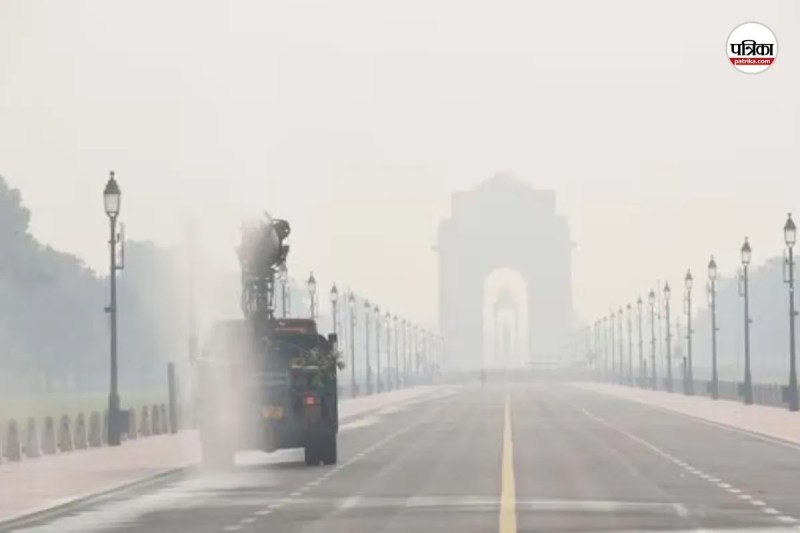
AQI in Delhi (Photo: Patrika)
With the onset of winter, the air in Delhi-NCR has turned toxic. Three days after the revelry of Diwali fireworks, the pollution level has reached the 'severe' category. According to the Central Pollution Control Board (CPCB), Delhi's average Air Quality Index (AQI) was recorded around 325 on Thursday morning, while in many areas, it climbed above 400. The situation in Noida is also concerning, with the AQI reaching 412. A thick blanket of smog has reduced visibility, and experts have advised restricting outdoor activities.
In Delhi's hotspots like Anand Vihar, the AQI has exceeded 500, which is 10 times higher than the World Health Organization (WHO) standards. In Sector-62, Noida, the PM2.5 level reached 282, posing a significant risk of respiratory illnesses. The roads around the Akshardham Temple were covered in smog, and visibility on the Parthala flyover dropped to a minimum. This situation is not only affecting health currently but is also feared to worsen during the winter season.
Despite the permission for 'green' firecrackers on Diwali (October 20), people openly flouted the ban. Consequently, the PM2.5 level surged to 488 micrograms per cubic meter, a threefold increase from 156.6 before the festival. Studies by IIT Delhi and IIT Kanpur indicate that biomass burning (such as crop residue and cow dung cakes) is the primary cause of pollution in Delhi, which intensifies after Diwali.
Experts have warned that this pollution can reduce lung capacity and lead to headaches, coughs, and heart diseases. Children, the elderly, and asthma patients will be the most affected. Dr. S K Dhaka, Rajdhani College, Delhi University, stated, "The Diwali pollution of 2025 is the highest in 5 years. The threefold surge in PM2.5 is worrying."
The Delhi government has restricted construction activities under GRAP-II and plans to initiate odd-even trials. Environment Minister Manjinder Singh Sirsa said the Winter Action Plan is fully active. Dust control measures, vehicle monitoring, and strict action against waste burning have been intensified. Delhi is among the world's most polluted cities, with 0% of days in 2025 meeting WHO's safe levels. If immediate steps are not taken, this crisis will persist throughout the winter.
Published on:
23 Oct 2025 12:36 pm
Big News
View AllNational News
Trending

